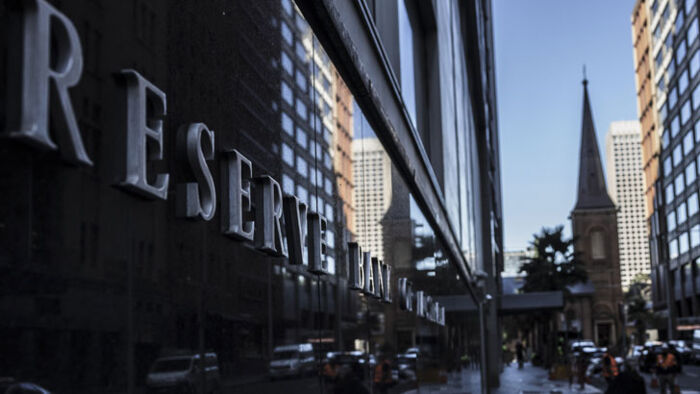What does the RBA do and how does it affect interest rates?
By Tom Watson
Aside from the flurry of news directly before and after monetary policy meetings, it's fair to say that the Reserve Bank of Australia (RBA) won't be front of mind on a regular basis for many Australians.
The Reserve Bank does play an influential role in many parts of financial and economic life though, and not just the impact it has on mortgage rates.
So for those wanting to learn more, here's a run-through of the role, responsibilities and some of the other key points worth knowing about the RBA.
What is the Reserve Bank of Australia and what does it do?
Like the Bank of England in the United Kingdom or the Federal Reserve in the United States, the Reserve Bank of Australia is the country's central bank.
Since 1961 the Reserve Bank has operated as an independent central bank, though its roots go back to the founding of the government-owned Commonwealth Bank of Australia in 1911.
The bank has a number of roles and functions, including conducting monetary policy, issuing currency, providing banking services to government agencies and managing Australia's official foreign currency and gold reserves.
More broadly, the RBA states that it aims to contribute to currency stability, full employment and economic prosperity. It does this by using monetary policy (primarily via the cash rate) to keep inflation within a target band and by maintaining a strong financial system and an efficient payments system.
Who owns the RBA?
The Reserve Bank is owned by the Commonwealth of Australia. Though it is an independent organisation it is still accountable to parliament, as Reserve Bank members regularly appear in front of Senate estimates and House committees.
The Reserve Bank governor, deputy governor and other members of the RBA Board are all appointed by the federal treasurer. The treasurer also has the power to veto monetary policy decisions made by the Reserve Bank, though it's a power that's never been used.
Who's on the Reserve Bank Board?
The Reserve Bank Board is made up of nine members which determine the central banks' monetary and banking policy, including any changes to the cash rate target.
Those members currently include the Reserve Bank governor and chair of the Board, Michele Bullock, the deputy governor and deputy chair, Andrew Hauser, the secretary to the Australian Treasury, Steven Kennedy, and six non-executive members.
How often does the RBA meet?
For years, the Reserve Bank Board met on the first Tuesday of every month (aside from January) after which it would release its monetary policy decision and any changes to the official cash rate.
But that changed this year as a result of the government's Reserve Bank review.
The new schedule means that the Reserve Bank Board meets roughly every 6-7 weeks. And instead of only conducting its meeting in a single day, it is now spread over a Monday afternoon and Tuesday morning, with the decision announced to the public at 2.30pm on Tuesday.
Where is the RBA located?
The Reserve Bank of Australia's head office is located in central Sydney, which is where the vast majority of its 1,500 or so workforce are employed.
It also has smaller offices in Adelaide, Brisbane, Canberra, Melbourne and Perth, as well as international offices in Beijing, London and New York.
What is the Reserve Bank's inflation target?
Like many central banks around the world, the Reserve Bank of Australia has an inflation target which it says it uses to help work towards its goals of maintaining price stability, full employment and the prosperity and welfare of Australians.
Since the early 1990s the RBA's target has been to keep annual consumer price inflation between the range of 2-3% - a range it believes is about right to avoid the negative impacts that come with overly low, or overly high inflation.
How does the RBA influence interest rates?
The cash rate target is the Reserve Banks' major monetary policy lever. By dropping the cash rate the central bank is able to help increase spending and activity in the economy, whereas by lifting the cash rate it can help decrease that activity.
That's because the cash rate is the interest rate which determines how much banks pay in order to borrow money from each other in the overnight money market.
This, in turn, goes some way to influencing the interest rates which banks offer their customers on everything from mortgages and personal loans to savings accounts and term deposits.
Do banks have to pass on RBA rate changes?
Australian banks and other lenders are under no obligation to increase or decrease the interest rates on their loan or deposit products when the cash rate changes.
However, because the cash rate does influence funding costs, bank rates do broadly move in line with it. The cash rate isn't the only factor that affects the rates banks offer though, as they're also swayed by things like competition in the market.
When is the cash rate announced and where can people find it?
The Reserve Bank Board releases its monetary policy decision statement and announces any changes to the cash rate on the second day of its meeting (Tuesday) at 2:30pm. This is then followed by a media conference held by governor Michele Bullock.
Anyone interested in reading the statement can find it, along with past statements, in the media releases section of the RBA website. Minutes of the meeting are also published two weeks later.
Get stories like this in our newsletters.



